1. ArrayList的缺陷
上节课已经熟悉了ArrayList的使用,并且进行了简单模拟实现。通过源码知道,ArrayList底层使用数组来存储元素。
由于其底层是一段连续空间,当
在
ArrayList
任意位置插入或者删除元素时,就需要将后序元素整体往前或者往后
搬移,时间复杂度为
O(n)
,效率比较低,因此
ArrayList
不适合做任意位置插入和删除比较多的场景
。因此:
java集合中又引入了LinkedList
,即链表结构。
2. 链表
2.1 链表的概念及结构
链表也是线性表的一种,链表是一种物理存储结构上非连续存储结构,数据元素的逻辑顺序是通过链表中的引用链接次序实现的。

实际中链表的结构非常多样,以下情况组合起来就有8种链表结构:
1.
单向或者双向

2. 带头或者不带头

3. 循环或者非循环
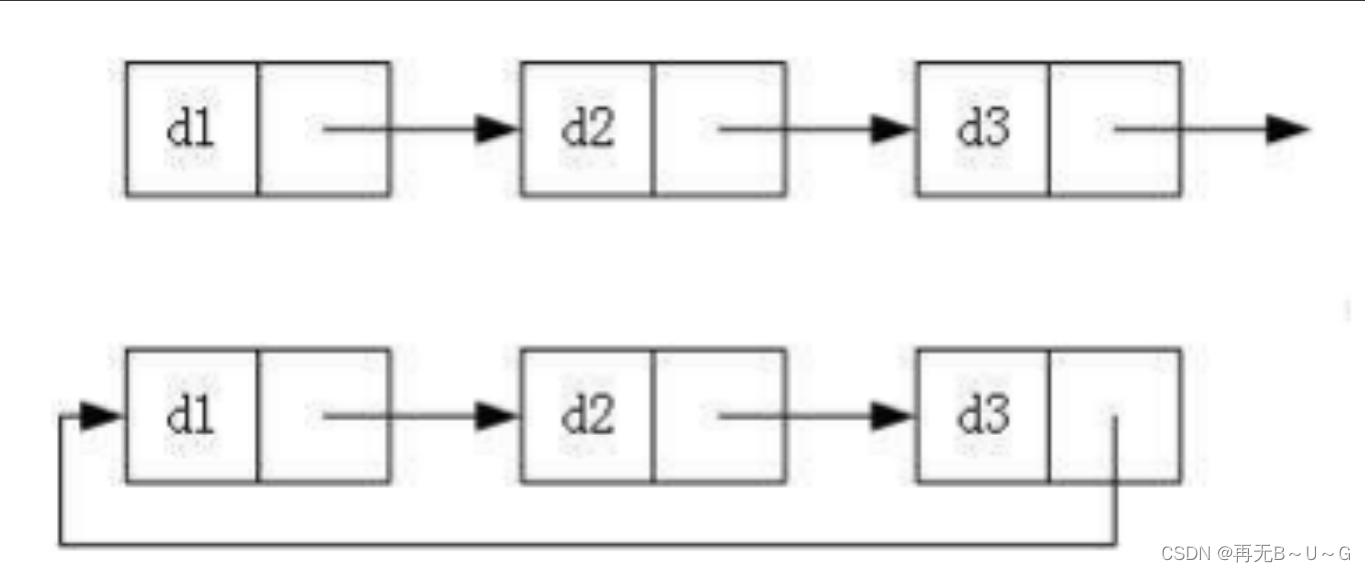
虽然有这么多的链表的结构,但是我们重点掌握两种:
- 无头单向非循环链表:结构简单,一般不会单独用来存数据。实际中更多是作为其他数据结构的子结构,如哈希桶、图的邻接表等等。另外这种结构在笔试面试中出现很多。
- 无头双向链表:在Java的集合框架库中LinkedList底层实现就是无头双向循环链表。
2.2 无头单向非循环链表实现
2.2.1 链表的类结构

2.2.2 头插法
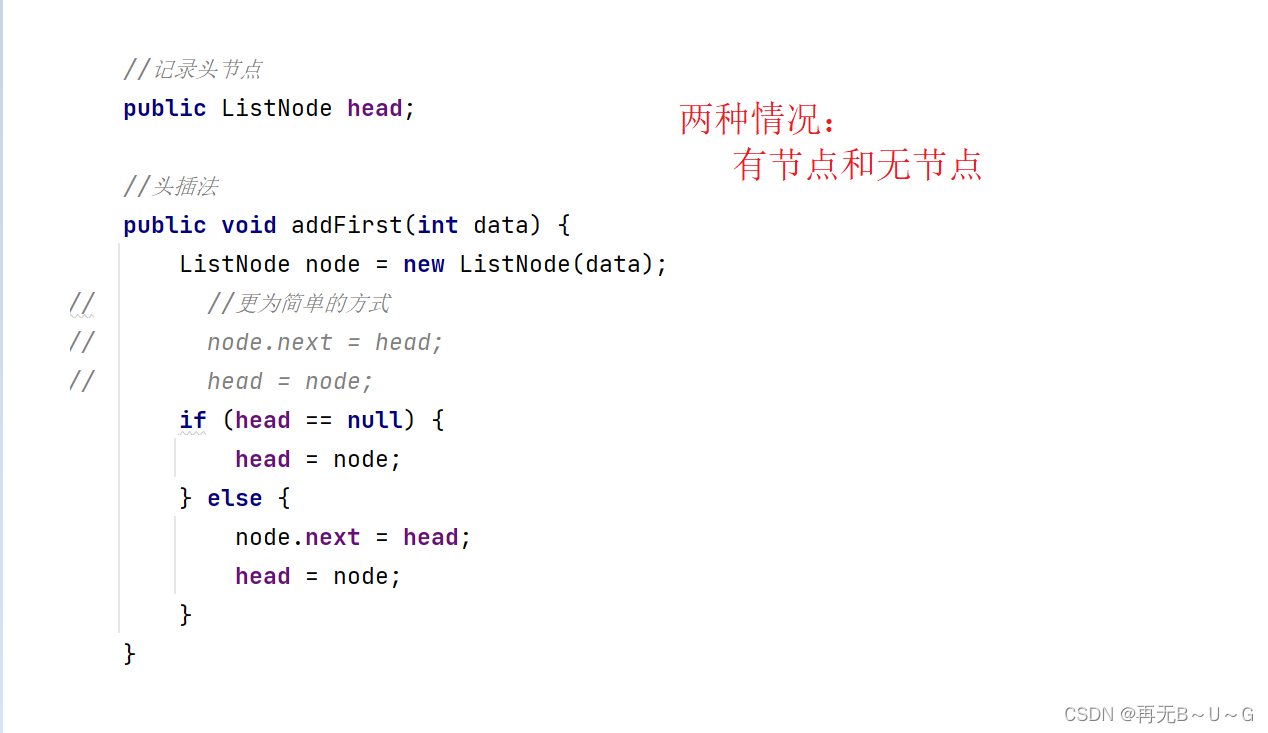
2.2.3尾插法
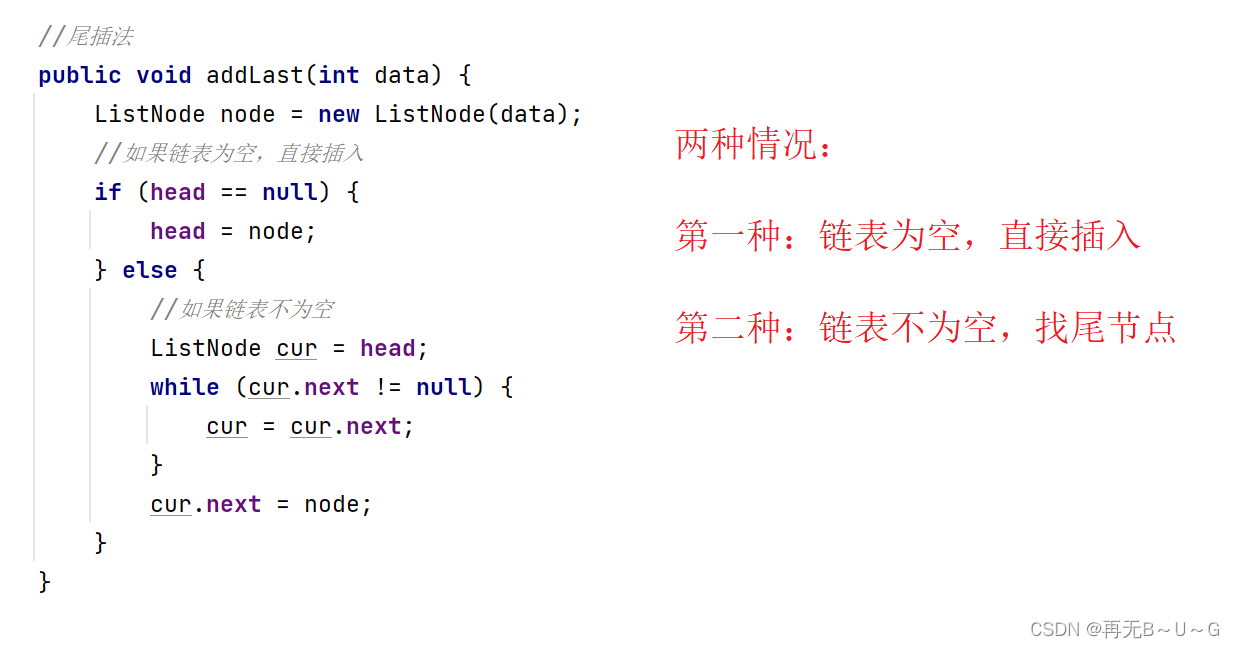
2.2.4在index前面插入
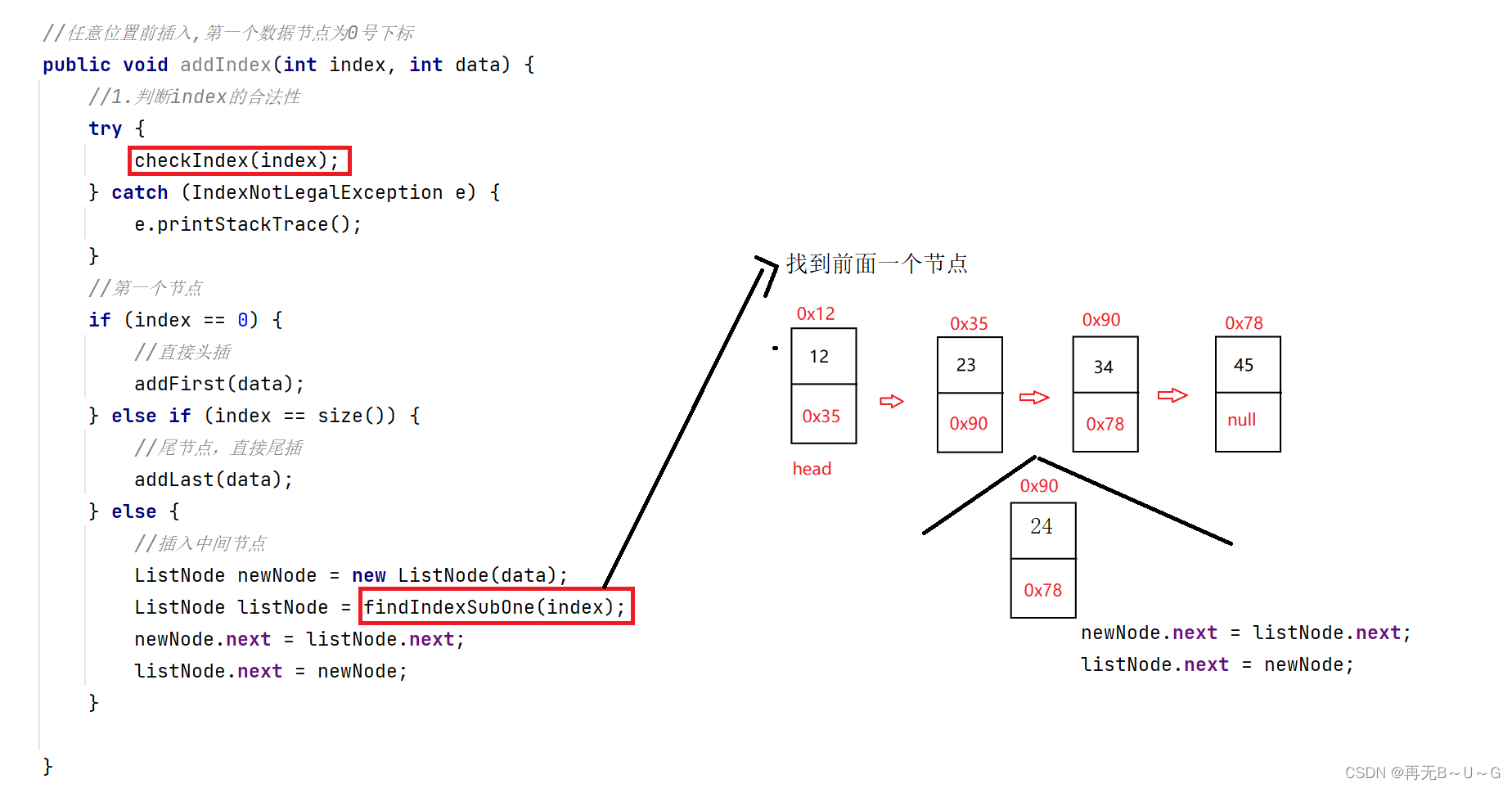
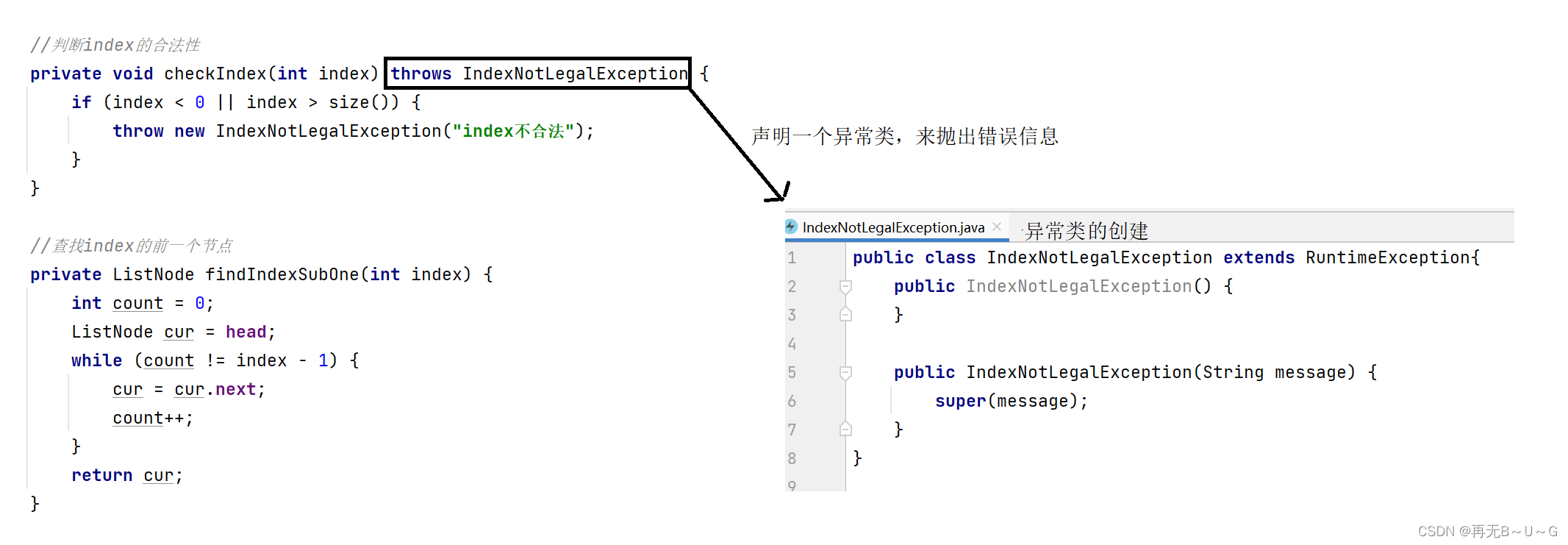
2.2.5查找是否包含关键字key是否在单链表当中
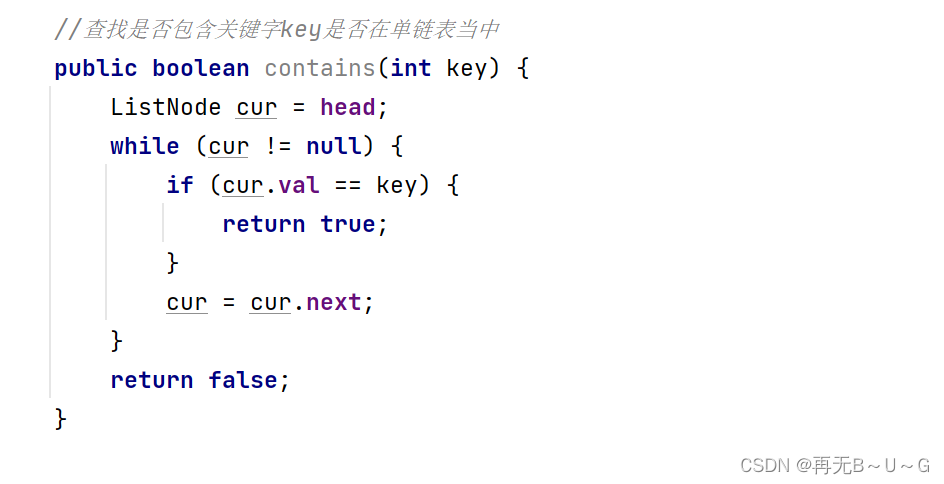
2.2.6删除第一次出现关键字为key的节点
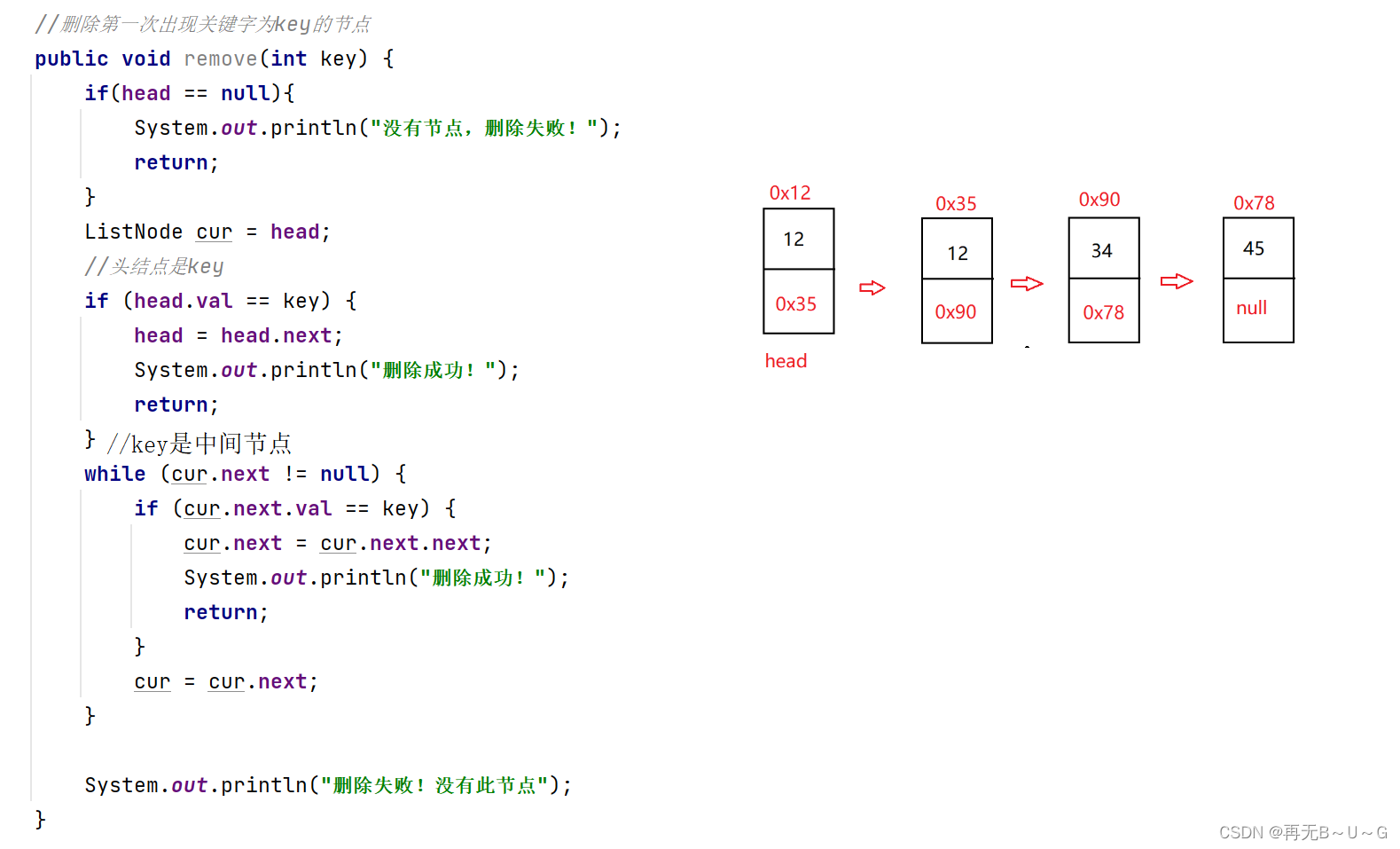
2.2.7删除所有出现关键字为key的节点
 2.2.8得到单链表的长度
2.2.8得到单链表的长度
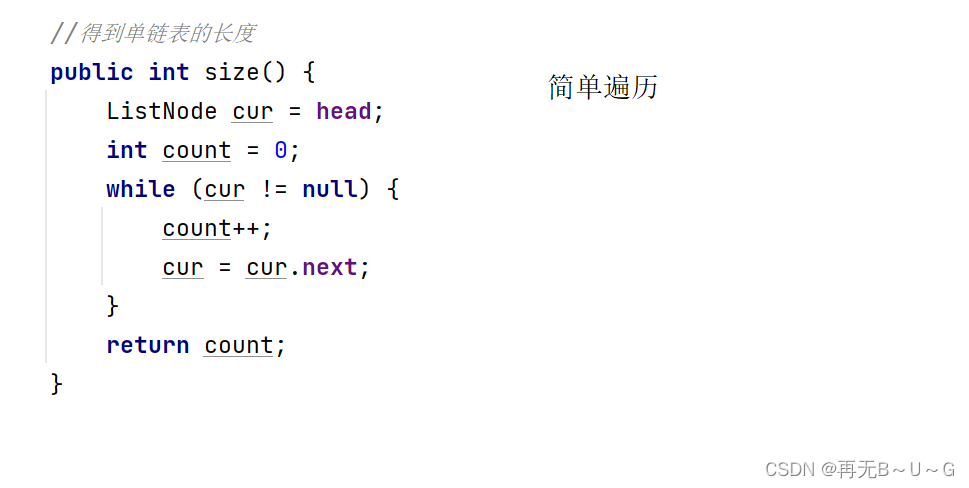
2.2.9释放链表
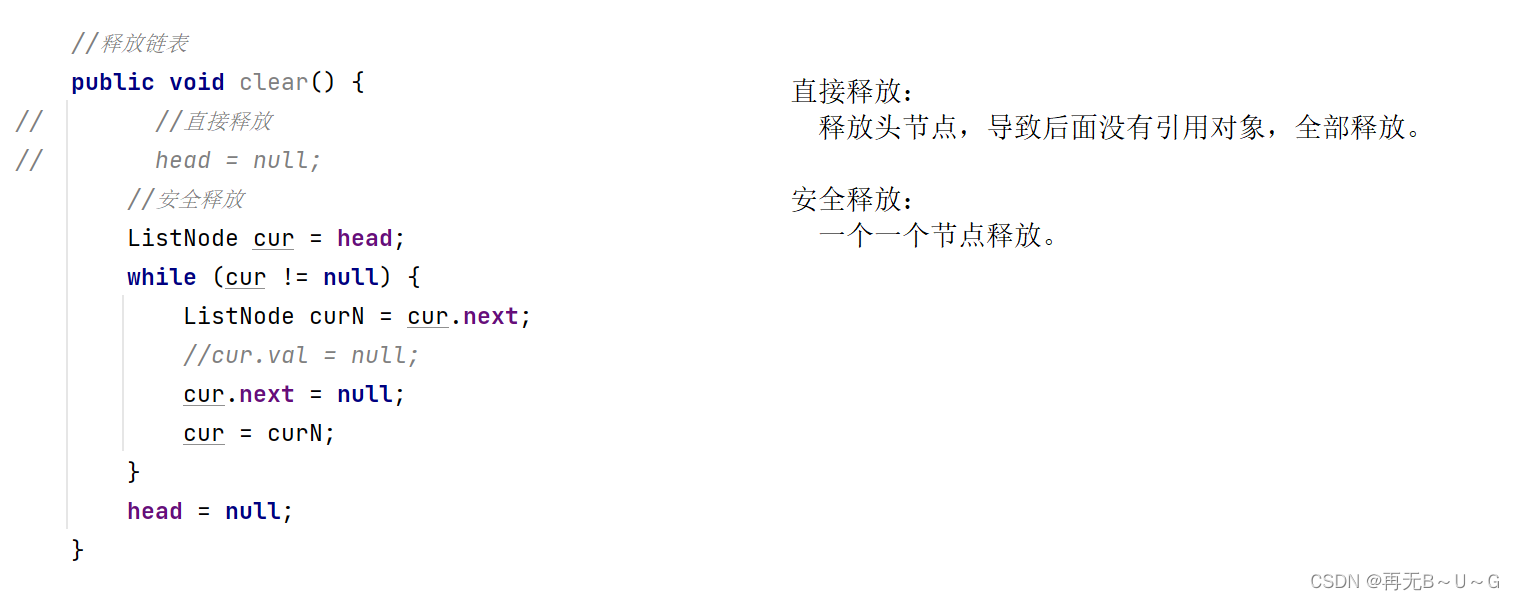
2.2.10节点打印

2.2.11得到节点长度

3.单向无头链表实现代码
MyLinkedList类
import java.util.Arrays;
public class SingleLinkedList {
static class ListNode {
public int val;
public ListNode next;
public ListNode(int val) {
this.val = val;
}
}
//记录头节点
public ListNode head;
//头插法
public void addFirst(int data) {
ListNode node = new ListNode(data);
// //更为简单的方式
// node.next = head;
// head = node;
if (head == null) {
head = node;
} else {
node.next = head;
head = node;
}
}
//尾插法
public void addLast(int data) {
ListNode node = new ListNode(data);
//如果链表为空,直接插入
if (head == null) {
head = node;
} else {
//如果链表不为空
ListNode cur = head;
while (cur.next != null) {
cur = cur.next;
}
cur.next = node;
}
}
//任意位置前插入,第一个数据节点为0号下标
public void addIndex(int index, int data) {
//1.判断index的合法性
try {
checkIndex(index);
} catch (IndexNotLegalException e) {
e.printStackTrace();
}
//第一个节点
if (index == 0) {
//直接头插
addFirst(data);
} else if (index == size()) {
//尾节点,直接尾插
addLast(data);
} else {
//插入中间节点
ListNode newNode = new ListNode(data);
ListNode listNode = findIndexSubOne(index);
newNode.next = listNode.next;
listNode.next = newNode;
}
}
//判断index的合法性
private void checkIndex(int index) throws IndexNotLegalException {
if (index < 0 || index > size()) {
throw new IndexNotLegalException("index不合法");
}
}
//查找index的前一个节点
private ListNode findIndexSubOne(int index) {
int count = 0;
ListNode cur = head;
while (count != index - 1) {
cur = cur.next;
count++;
}
return cur;
}
//查找是否包含关键字key是否在单链表当中
public boolean contains(int key) {
ListNode cur = head;
while (cur != null) {
if (cur.val == key) {
return true;
}
cur = cur.next;
}
return false;
}
//删除第一次出现关键字为key的节点
public void remove(int key) {
if(head == null){
System.out.println("没有节点,删除失败!");
return;
}
ListNode cur = head;
//头结点是key
if (head.val == key) {
head = head.next;
System.out.println("删除成功!");
return;
}
while (cur.next != null) {
if (cur.next.val == key) {
cur.next = cur.next.next;
System.out.println("删除成功!");
return;
}
cur = cur.next;
}
System.out.println("删除失败!没有此节点");
}
//删除所有值为key的节点
public void removeAllKey(int key) {
//1. 判空
if(this.head == null) {
return;
}
//2. 定义prev 和 cur
ListNode prev = head;
ListNode cur = head.next;
//3.开始判断并且删除
while(cur != null) {
if(cur.val == key) {
prev.next = cur.next;
}else {
prev = cur;//prev = prev.next;
}
cur = cur.next;
}
//4.处理头节点
if(head.val == key) {
head = head.next;
}
System.out.println("删除成功!");
}
//得到单链表的长度
public int size() {
ListNode cur = head;
int count = 0;
while (cur != null) {
count++;
cur = cur.next;
}
return count;
}
//释放链表
public void clear() {
// //直接释放
// head = null;
//安全释放
ListNode cur = head;
while (cur != null) {
ListNode curN = cur.next;
//cur.val = null;
cur.next = null;
cur = curN;
}
head = null;
}
//节点打印
public void display() {
ListNode cur = head;
while (cur != null) {
System.out.print(cur.val + " ");
cur = cur.next;
}
System.out.println();
}
}
Test测试类
public class Test {
public static void main(String[] args) {
SingleLinkedList singleLinkedList = new SingleLinkedList();
//头插法
// singleLinkedList.addFirst(1);
// singleLinkedList.addFirst(2);
// singleLinkedList.addFirst(3);
// //尾插法测试
// singleLinkedList.addLast(1);
// singleLinkedList.addLast(1);
// singleLinkedList.addLast(1);
singleLinkedList.addLast(3);
singleLinkedList.addLast(2);
singleLinkedList.addLast(3);
singleLinkedList.addLast(3);
singleLinkedList.addLast(5);
// //任意位置插入测试
// singleLinkedList.addIndex(0,5);
// //是否含有此元素测试
// System.out.println(singleLinkedList.contains(3));
// singleLinkedList.remove(3);
singleLinkedList.removeAllKey(3);
singleLinkedList.display();
System.out.println(singleLinkedList.size());
}
}
IndexNotLegalException运行时异常类
public class IndexNotLegalException extends RuntimeException{
//无参构造方法
public IndexNotLegalException() {
}
//含一个参数参构造方法
public IndexNotLegalException(String message) {
super(message);
}
}
好啦,今天就到这里了,我们下期再见,感谢观看。








 本文分析了ArrayList在插入和删除操作中的性能问题,介绍了LinkedList(链表)的多种结构,重点讲解了无头单向非循环链表的实现,包括头插法、尾插法、索引插入、查找与删除功能,以及单向LinkedList类的详细代码示例。
本文分析了ArrayList在插入和删除操作中的性能问题,介绍了LinkedList(链表)的多种结构,重点讲解了无头单向非循环链表的实现,包括头插法、尾插法、索引插入、查找与删除功能,以及单向LinkedList类的详细代码示例。















 2021
2021

 被折叠的 条评论
为什么被折叠?
被折叠的 条评论
为什么被折叠?










